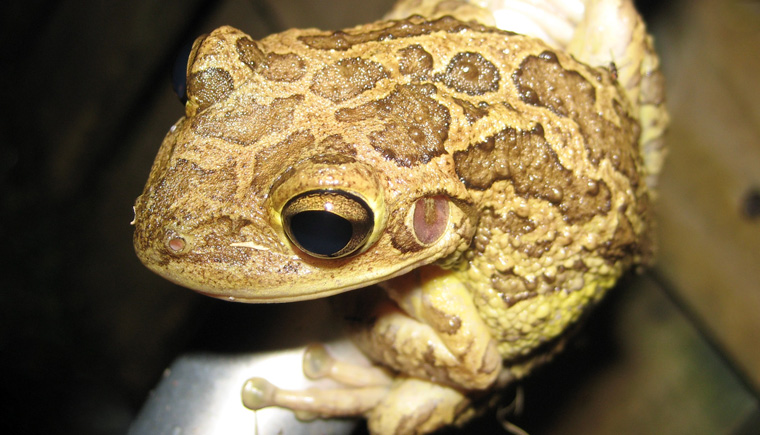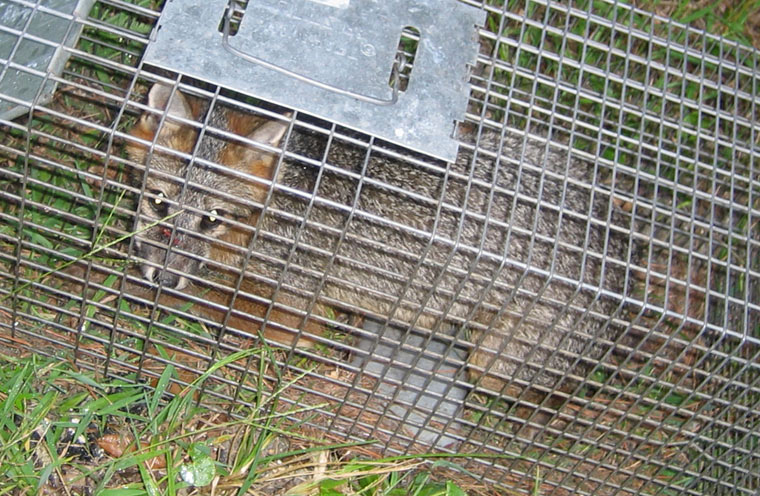-
info@aaanimalcontrol.com
Call us for help in your town
Humane Wildlife Education
Do relocated wildlife thrive or have difficulty surviving?
Need wildlife removal in your hometown? We service over 500 USA locations! Click here to hire us in your town and check prices - updated for year 2020.
Each year, thousands of people across the country find that some kind of wild animal has gotten into their home and remove it by using a trap. While they don't want the animal in their house, they also don't want to take such a drastic action of terminating the animal's life. Instead, they choose to trap it and relocated to an area away from their home.

This is a very humane choice to make, to decide that relocating wildlife is a much better option than simply killing it. However, what many wonder is that by moving the animal if they are actually giving it a chance of survival. This may make you wonder if a wildlife animal will thrive once it is relocated or if it can even survive at all?
This is an interesting question. Your purpose for wanting to trap and move the animal was to give it a chance to live without it being in your home. Obviously, for this reason, you would like to ensure that relocating it gives it the best chance of survival. Sadly, the answer to that is no.
Before you start to get depressed that your efforts have gone for nothing, it is important to explain this in a little greater detail. Most people capture these animals and take them to an area that they assume would be ideal for the animal to survive in. They haven't done any research and don't really understand that area well. What they know is that a wild animal should do well in a park or forest area, and so they simply relocated there. This is where the mistake begins.
If you took the time to research where the specific species of animal that you have captured is best suited, you will likely find an environment that provides a better opportunity for it to be able to survive and thrive. You need to consider that it is not just about having trees and water around. There needs to be adequate sources of food, places for it to be able to find shelter and, most importantly, a place where there are not a significant number of predators that could endanger the animal.
This last point is actually the one you should be concerned with the most. If there are a large number of predators that would seek to capture and kill your animal, and you have dropped it in a location that this animal knows nothing about while it is in the center of an area where the predators have been dwelling for a long time, you can be certain that there is no possibility for this animal to survive. You have to research to see what predators are around and how much of a risk they pose to your wildlife animal that you trapped before you decide to release them. Otherwise, you are ensuring that that statistic that says that there is little likelihood that they will survive is a reality.
Do Relocated Wildlife Thrive or Have Difficulty Surviving?
Need wildlife removal in your hometown? We service over 500 USA locations! Click here to hire us in your town and check prices- updated for year 2020.
Just one of the many approaches you can take when you have a wildlife problem in your home, commercial building, or on your land, is to trap and release the animal back into the wild. This can often seem like the approach that makes the most sense, removing the problem whilst not causing it any harm. Well, apart from a little bit of distress from the whole trapping-and-releasing process, of course.

Sadly, relocated wildlife do not have it all that easy. In fact, studies have shown that animals can be put through an immense amount of stress and distress when they are captured, especially when the process is not done correctly. In some cases, incorrect trapping methods can cause physical injury to the animal, and in some cases, can even cause death. This is often the case when larger traps are used to capture smaller animals. The captured animal has more room to throw themselves around and are, therefore, likely to do so, possibly injuring themselves in the process.
The stress that animals are put through when they are trapped can be so great that it can affect their chances when they are released back into the wild again. Stress is enough to stop human beings from being capable of leading ‘normal' lives, so of course it will have an effect on the captured animal when it is released. Rats, for example, have been shown to experience some form of actual emotional distress and sorrow when they are removed from their long term partners and friends, or other members of the group, and this can actually hinder their ability to do ‘regular' things, including finding food, having fast reflexes, and generally just being able to take care of themselves. It could almost be said that rats (as well as other rodents and animals) also experience similar symptoms that depression and anxiety can bring to people.
When an animal is released into the wild, a number of things need to happen in order for that animal to survive. In a very short space of time, it must find a source of food or water, otherwise it won't have enough energy to survive a few hours, let alone the night. The time that you release the animal can have an impact. If you release a nocturnal animal into the wild first thing in the morning, for example, the animal is just going to want to curl up and go to sleep after being awake all night already. Imagine if you were up all night, working the nightshift, and then you came home and found yourself evicted. You would be homeless and incredibly tired. Finding a new home, as well as a home for your family potentially, and finding food, water, and keeping yourself, your family and your belongings safe from the bad guys around you ... That's a tough job. That's what you're expecting this animal to do when you trap it and try to relocate it into the wild.
As well as the animal itself more than likely dying as a result of you releasing it back into the wild, you also run the risk of putting the entire ecosystem in that area at risk. This is most definitely the case in Florida, which is known as the home of invasive species. An invasive species is one that is not native to that land, and after introduction, has proved detrimental to the ecosystem or human life. There are now believed to be over fifty invasive species in Florida alone, a number that has been studied extensively over the last couple of decades.
The thing with Florida is that it has a beautiful, subtropical climate. Humans love it and flock to it year after year, and so do many wild animals, particularly those who are used to beautiful, subtropical climates in their native lands. There are six new snake species in Florida now, all introduced as a result of the exotic pet trade. These invasive snake species, including the Burmese python, are allowed to escape and reproduce in the wild, putting local wildlife populations at serious risk. Some pet owners even willingly and deliberately release their exotic pets into the wild too, snakes included. Many of them soon realize that these creatures are a lot more hard work and hassle to take care of than initially thought, and provides us with a real warning — the wrong pet choices really can affect the rest of the world around you. Snakes, and other exotic pets, are for life. They're not just for Christmas ... or whatever.
Finally, relocating a wild animal that you have captured back into the wild could not just be detrimental to the ecosystem, and also to the animal itself, but to you — the human who has captured and released it. Certain animals, many of which will try to enter your home, must be destroyed on the land they were found. If you were to accidentally release a captured Burmese python or Cuban tree frog into the wild, for example, you could face a fine. In worst-case scenarios, you could even face a prison sentence. This isn't the case for just invasive species either. There are a few native species that you are not allowed to just release where you feel like it, and these include raccoons and skunks, and even some bats too. In fact, there are some bat species which are protected — endangered or threatened. You will need to do some research into the animal you're faced with before you take action. The last thing you'll want is trouble from the cops over a pesky pest!
For more information, you may want to click on one of these guides that I wrote:
How To Guide: Who should I hire? - What questions to ask, to look for, who NOT to hire.
How To Guide: do it yourself! - Advice on saving money by doing wildlife removal yourself.
Guide: How much does wildlife removal cost? - Analysis of wildlife control prices.
Animals in the attic - read about the common species.
Noises in the attic - how to identify critters by their sounds.


















